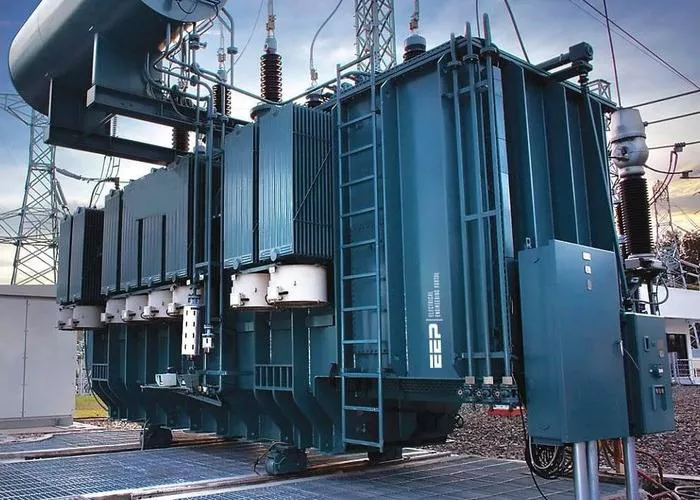Transformers are a vital component of power systems, serving the essential function of voltage transformation to ensure efficient power distribution. One of the critical aspects of transformer maintenance is the condition of the insulating oil, commonly known as transformer oil. This oil not only insulates the internal components but also acts as a coolant, dissipating heat generated during transformer operation. The quality of this oil significantly affects the transformer’s longevity and performance. Understanding when to change transformer oil is fundamental for electrical engineers and maintenance teams aiming to optimize reliability and safety.
Understanding Transformer Oil: Composition and Functionality
Transformer oil is a highly refined petroleum-based oil that serves multiple purposes inside a transformer:
- Insulation: It provides electrical insulation between internal components, preventing electrical discharges.
- Cooling: It helps in heat dissipation generated by the core and windings.
- Protection: It prevents oxidation and corrosion by providing a barrier against moisture and air.
Over time, transformer oil deteriorates due to thermal, electrical, and environmental stresses, resulting in degraded insulation properties and reduced cooling effectiveness.
Factors Leading to Transformer Oil Degradation
Transformer oil degradation is a complex process influenced by several factors:
- Thermal Stress: High operating temperatures accelerate the breakdown of oil molecules, producing sludge and acids.
- Oxidation: Oxygen ingress, often through seals or during maintenance, causes chemical reactions that degrade oil quality.
- Moisture Contamination: Water content in oil drastically reduces dielectric strength and promotes insulation breakdown.
- Electrical Stress: Partial discharges and arcing within the transformer cause localized heating and oil deterioration.
- Presence of Contaminants: Dust, dirt, and metallic particles contaminate the oil and adversely affect its properties.
Regular monitoring and analysis of transformer oil is crucial to detect these deteriorating factors early and to decide on oil replacement.
Key Parameters to Monitor for Transformer Oil Health
To determine the need for oil change, several diagnostic tests are commonly performed:
- Dielectric Breakdown Voltage (BDV): This is a measure of the oil’s insulation capability. A drop below acceptable levels signals contamination or degradation.
- Dissolved Gas Analysis (DGA): Identifies gases produced by oil decomposition and electrical faults, providing early warning signs.
- Moisture Content: Measured in parts per million (ppm), excessive moisture compromises insulation.
- Acidity (Neutralization Number): Indicates the presence of acidic compounds formed during oxidation.
- Interfacial Tension (IFT): Reflects the oil’s ability to separate from water and contaminants; lower values suggest degradation.
- Color and Appearance: Darkening or sludge formation visually indicates oil aging.
Interpreting these parameters collectively allows engineers to make informed decisions on oil replacement.
When to Change Transformer Oil: Guidelines and Best Practices
There is no fixed interval for changing transformer oil, as the timeline depends on the operating conditions, transformer design, and maintenance practices. However, typical guidelines include:
- If Dielectric Breakdown Voltage falls below 30 kV (for most transformers), immediate action is recommended.
- If Dissolved Gas Analysis indicates dangerous gas levels (e.g., hydrogen, acetylene) suggesting arcing or overheating.
- When Moisture Content exceeds 30 ppm in transformers operating at normal temperatures.
- If Acidity surpasses 0.1 mg KOH/g, indicating significant oxidation.
- Upon visual detection of sludge or darkened oil, particularly when combined with other failing parameters.
Routine oil testing should be part of a scheduled maintenance program for all electrical equipment involving transformers. Oil replacement can either be full or partial, depending on the severity of contamination and feasibility.
Oil Change Procedures: Step-by-Step Approach
Changing transformer oil involves careful planning and execution to avoid introducing contaminants or causing damage. The typical procedure includes:
- Draining: The old oil is drained completely under controlled conditions to prevent moisture ingress.
- Cleaning: Internal transformer components may be cleaned to remove sludge and sediment.
- Drying: The transformer is dried using vacuum or hot air to eliminate moisture.
- Refilling: Fresh, filtered, and degassed transformer oil is carefully filled back.
- Testing: Post-refill testing, including BDV and DGA, is conducted to confirm oil quality.
Proper disposal of used oil is essential, complying with environmental regulations and standards.
Innovations in Transformer Oil Maintenance
Recent advances include the use of alternative insulating fluids like synthetic esters and natural esters, which offer better biodegradability and higher fire points. Additionally, online monitoring systems enable continuous real-time analysis of oil parameters, allowing proactive maintenance and extending the intervals between oil changes. These technologies improve reliability and reduce downtime for power systems.
Conclusion
Maintaining the quality of transformer oil is paramount to ensuring the safe, efficient, and reliable operation of transformers. Understanding when to change transformer oil requires comprehensive analysis of key parameters and consideration of operational factors. Through regular testing, preventive maintenance, and adopting modern monitoring technologies, engineers can effectively manage transformer health and extend equipment life. Transformer oil change is not merely a routine task but a strategic action to safeguard electrical infrastructure and maintain uninterrupted power supply.
FAQs
Q1: How often should transformer oil be tested?
Transformer oil should typically be tested annually or bi-annually, depending on the transformer’s criticality and operating conditions. High-load or older transformers may require more frequent testing.
Q2: Can transformer oil be filtered instead of replaced?
Yes, oil filtration and purification processes can remove moisture, gases, and particles, extending the oil’s service life. However, if the oil is severely degraded or contaminated, replacement is necessary.
Q3: What are the risks of delaying transformer oil change?
Delaying oil change can lead to reduced insulation strength, increased risk of electrical faults, overheating, and ultimately transformer failure, causing costly downtime and repairs.
Q4: Are there environmental concerns with transformer oil disposal?
Yes, used transformer oil contains hazardous substances and must be disposed of or recycled according to environmental regulations to prevent soil and water contamination.
Q5: What are the signs of transformer oil failure during operation?
Signs include unusual odors, overheating, discoloration of oil, unusual noises, and abnormal readings from dissolved gas analysis.

